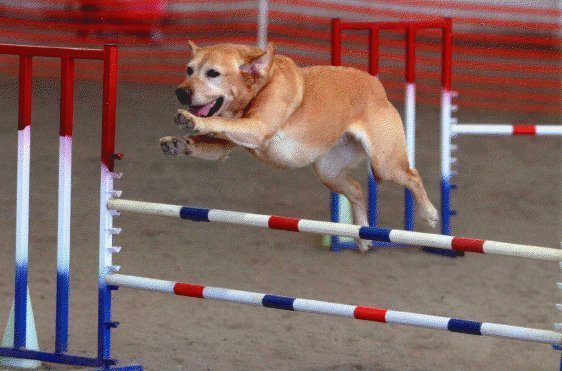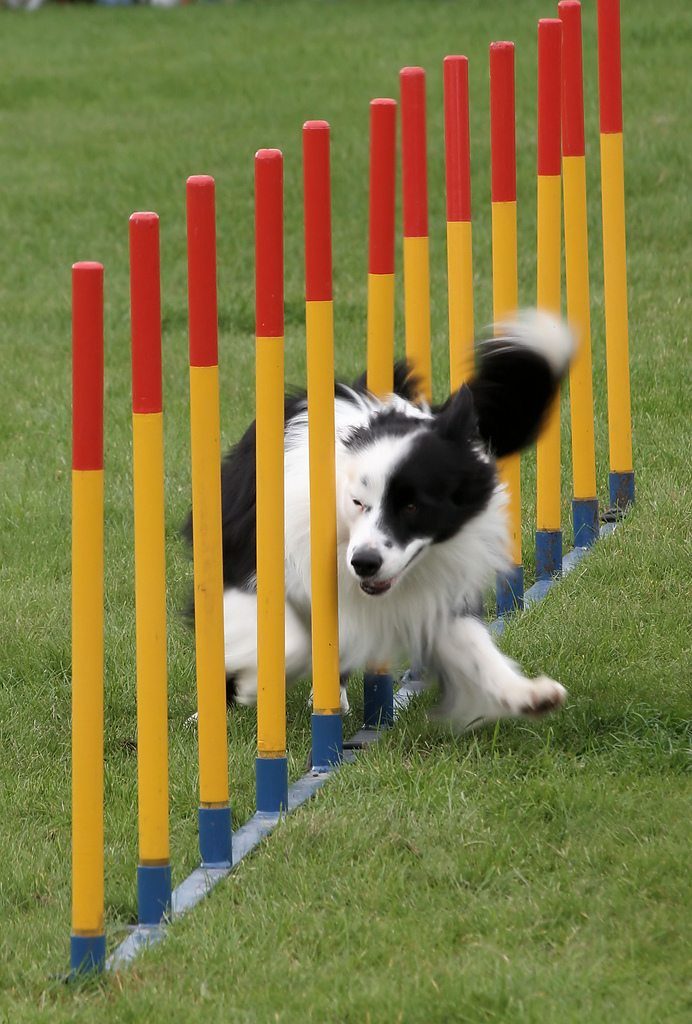
One of the most rewarding things about being owned and loved by a canine companion is the ability to do some sort of exercise with him or her such as dog agility. There are all sorts of ways to bond with your dog through exercise, ranging from walking your neighborhood to highly competitive sports, like dog agility competitions. Getting started in a new form of exercise together might seem a little intimidating, but let me assure you, you’re not alone and everyone that does dog agility training started in the same place as you!
Dog Agility Training Is A Great Outlet For Energetic Dogs
When I asked others, “why did you get started in dog agility?” – I got a surprising number of responses like “I had a little monster in my house”. Destructive, bored dogs look for, and will find, an outlet for their energy. Why not direct it in a way that you and the dog can really enjoy? Dog agility training is healthy and fun, all at the same time.
What Are The Best Agility Dog Breeds?
According to the United States Dog Agility Association, there are over 200 different breeds including mixed breeds, participating in dog agility. Almost every sound, healthy dog, and almost every person, can do agility training. There’s no “right dog” or “wrong dog”. Regardless of breed, dog agility is a great way to develop an even stronger, more rewarding relationship with your best friend.
Watch This Little Chihuahua practice his agility skills
Find and Assess Dog Agility Training Centers
To get started, find a local dog agility club or training facility. Then go watch a couple of classes, both beginner and more advanced. Is the atmosphere warm and friendly? Do the handlers and their dogs appear to be having fun? They should. You won’t need much in the way of equipment. However, your dog will need to have the appropriate vaccines and be social enough to be in a confined area with other dogs in a non-aggressive way.
What to Expect During Dog Agility Training
One of my funniest memories is my first agility class, where we were told NOT to bring the dog! For real! I was ready to get started, not go sit in a lecture. Wow, I was so wrong. The first class WE got to be the dog and the instructor gave us commands, non-verbally and often with no hand signals and we were supposed to know what she wanted us to do – how? Telepathically? We would get a peanut M&M for a treat when we were able to figure out the desired activity. We worked really hard for those M&M’s too. Then, we were instructed to walk around a course, stepping over obstacles and occasionally dropping down to hands and knees to see obstacles from our dogs’ point of view. It was an eye-opening experience. Understanding agility from a canine perspective is the right way to start.
Is My Dog Too Young Or Too Old For Dog Agility Events?
You might be wondering: is my dog too young or too old? Am I too young or too old? There is no upper age limit on agility. If you have a very young dog or puppy, then yes, you can still do agility training; however, you don’t want to do anything in agility that can injure or compromise your dog’s body or joints. And you are not allowed to enter dog agility events or dog agility events until your puppy at least meets the eligible age (depending on the organization, it’s between 12 – 18 months).
Same goes if you have an old guy; keep in mind if they have been sedentary for a while, you’ll need to work into more activity. Many people are often surprised at how much younger their dogs “become” after starting agility training. The same goes for the handlers. If you’ve been sedentary, keep in mind that agility can be hard on knees and ankles (and whole bodies if your dog runs into you and knocks you down), so you may want to work up to a higher level by increasing your workouts gradually.

Dog Agility Equipment
Consider getting a new dog collar for agility training and agility trials. Some people have different collars that they use for different activities, and the dog associates the activity by the collar they are wearing. Your training facility can further guide you on the needed gear. Typically, for practice, you will want to use a standard flat collar with nothing hanging off the collar: no tags, clips or anything that can get caught on a piece of equipment. A simple slip lead is good to have as well as a short clip-on leash. Your instructor may want you to have a “treat bag” of especially yummy treats that are only given out at agility. They are big ticket reward treats. They sometimes help a shy dog become motivated enough to forget about what’s making them nervous or shy.
Dog Agility Training Expectations
How long should you practice? Dogs, in many ways, are like children. They enjoy being challenged and enjoy being rewarded, but their attention span can be short, especially in the beginning. Keep your training spontaneous and short. Don’t overdo it – when the dog does it right, reward and move on.
Dog Agility Trials
In the United States there several organizations responsible for sponsoring dog agility competitions and overseeing the the sport’s rules and policies: www.akc.org, www.USDAA.com, www.nadac.com are just a sample and you can find AKC Events as well. Although they are all very similar, these organizations have unique and differing rules. For instance the AKC only allows purebreds, whereas the other organizations allow mix breeds to participate. In US Dog Agility Association (USDAA), the dog has to run “naked” through the dog agility cource with no collar, so if you want to enter USDAA events, you will want your dog to be confident with no collar. it’s important to understand how each organization operates so you can participate in an event that best fits you and your dog.
AgilityEvents.net is a great online source for finding agility event calendars near you.
Last Piece of Advice
Whatever you do, don’t compare your dog or your performance at agility to any others. Some dogs (and some handlers) are just naturals at this sport and some take it at a slower pace. The important thing to remember is that it’s YOUR pace and the biggest reward will come from the solid and strong partnership you will develop.
Authored By: Shelley Garland
This article was written fondly in memory of my beautiful Labrador Retriever, “Pineberry’s Razzberry Ma Tazz”, whom I bred, owned, loved and showed in many venues until she very unexpectedly passed from acute liver failure in November 2010 at the young age of 9. Here’s to you Tazz. – you taught me well! – Shelley Garland









